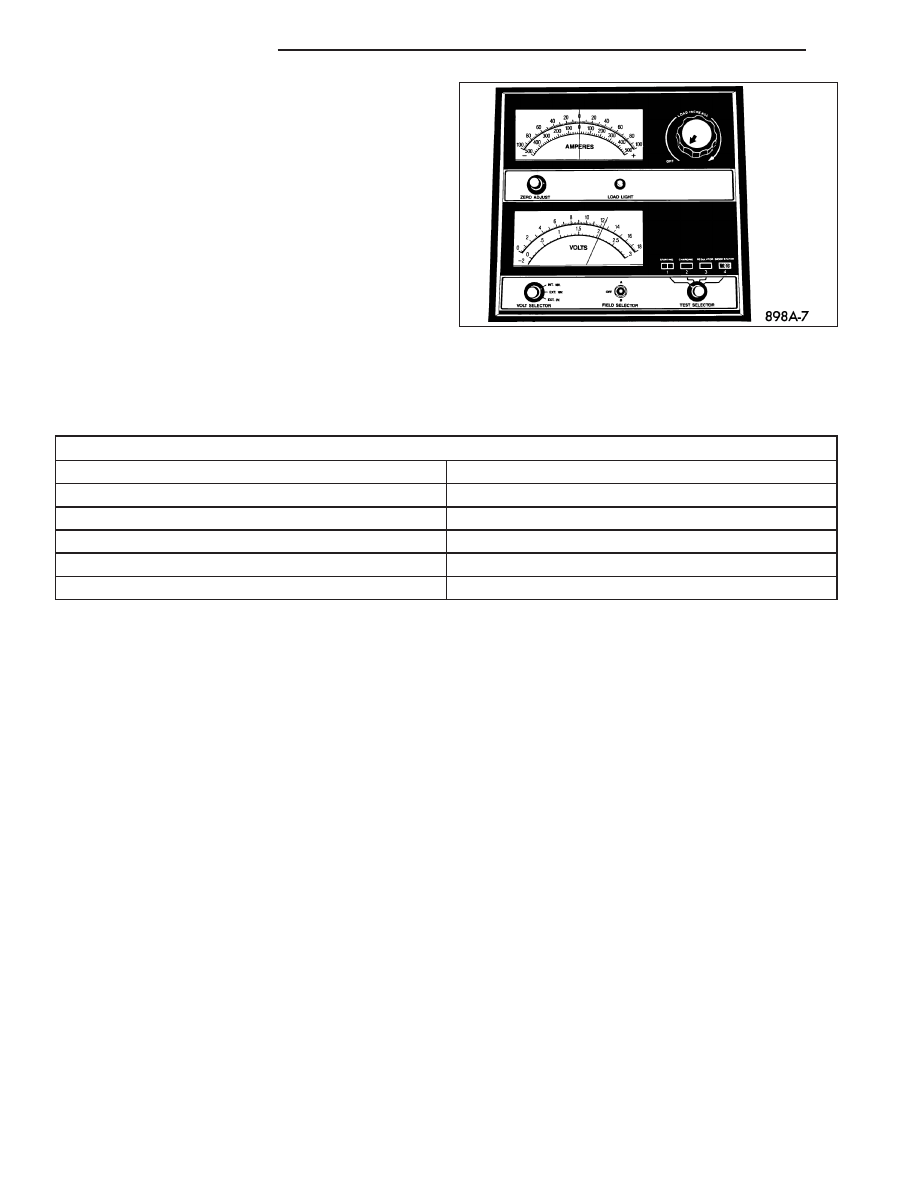Chrysler 300/300 Touring/300C, Dodge Magnum. Manual - part 407

3. Using a voltmeter connected to the battery posts,
measure the open-circuit voltage.
See the Open-Circuit Voltage Table. This voltage reading will indicate the battery state-of-charge, but will not reveal
its cranking capacity. If a battery has an open-circuit voltage reading of 12.4 volts or greater, it may be load tested
to reveal its cranking capacity, (Refer to 8 - ELECTRICAL/BATTERY SYSTEM/BATTERY - STANDARD PROCE-
DURE - USING MICRO 420 BATTERY TESTER).
OPEN CIRCUIT VOLTAGE TABLE
Open Circuit Voltage
Charge Percentage
11.7 volts or less
0%
12.0 volts
25%
12.3 volts
50%
12.6 volts
75%
12.8 volts or more
100%
IGNITION-OFF DRAW TEST
The term Ignition-Off Draw (IOD) identifies a normal condition where power is being drained from the battery with
the ignition switch in the Off position. A normal vehicle electrical system will draw from five to thirty-five milliamperes
(0.005 to 0.035 ampere) with the ignition switch in the Off position, and all non-ignition controlled circuits in proper
working order. Up to thirty-five milliamperes are needed to enable the memory functions for the Powertrain Control
Module (PCM), digital clock, electronically tuned radio, and other modules which may vary with the vehicle equip-
ment.
A vehicle that has not been operated for approximately twenty days, may discharge the battery to an inadequate
level. When a vehicle will not be used for twenty days or more (stored), remove the IOD fuse from the Junction
Block (JB). This will reduce battery discharging.
Excessive IOD can be caused by:
•
Electrical items left on.
•
Inoperative or improperly adjusted switches.
•
Inoperative or shorted electronic modules and components.
•
An internally shorted generator.
•
Intermittent shorts in the wiring.
If the IOD is over thirty-five milliamperes, the problem must be found and corrected before replacing a battery. In
most cases, the battery can be charged and returned to service after the excessive IOD condition has been cor-
rected.
1. Verify that all electrical accessories are off. Turn off all lamps, remove the ignition key, and close all doors. If the
vehicle is equipped with an illuminated entry system or an electronically tuned radio, allow the electronic timer
function of these systems to automatically shut off (time out). This may take up to three minutes. See the Elec-
tronic Module Ignition-Off Draw Table for more information.
8F - 14
BATTERY SYSTEM
LX